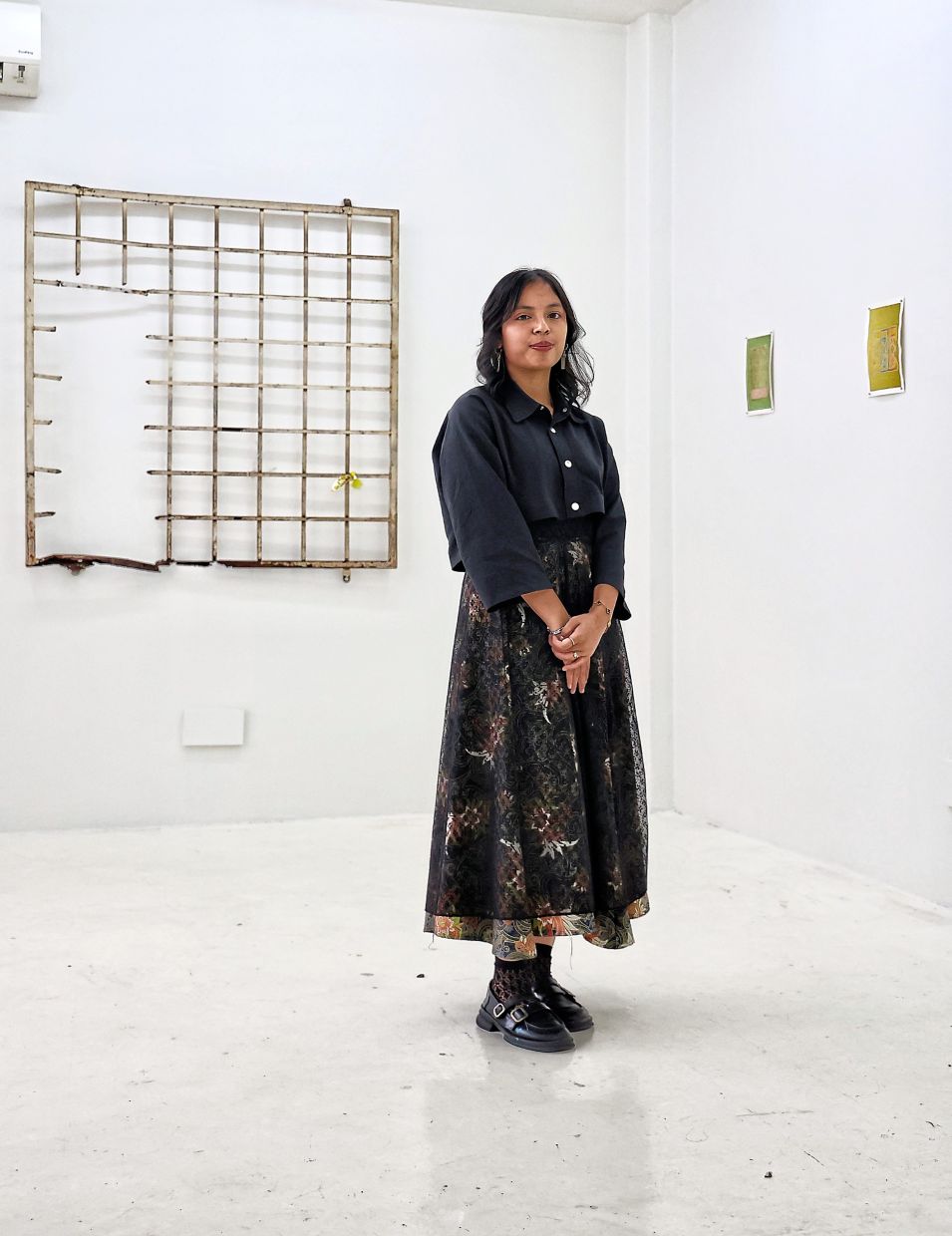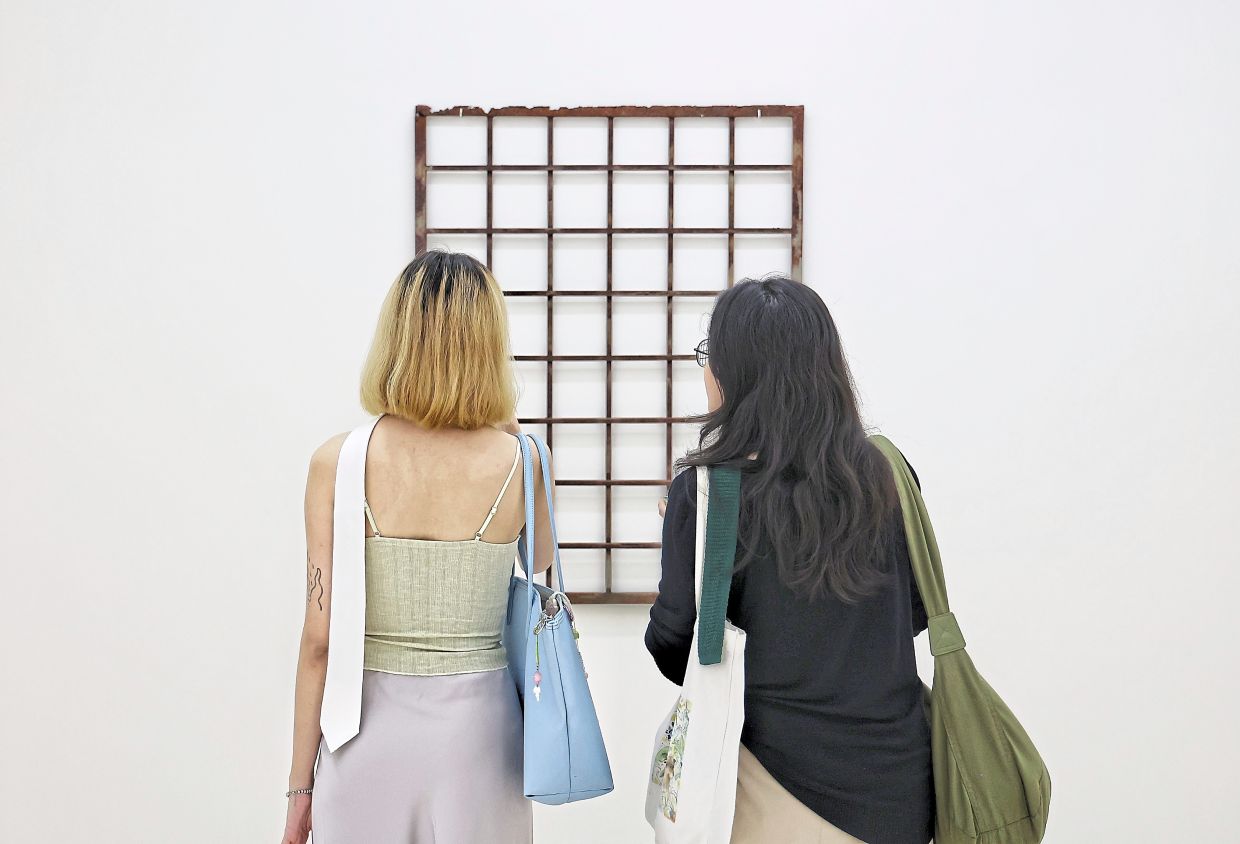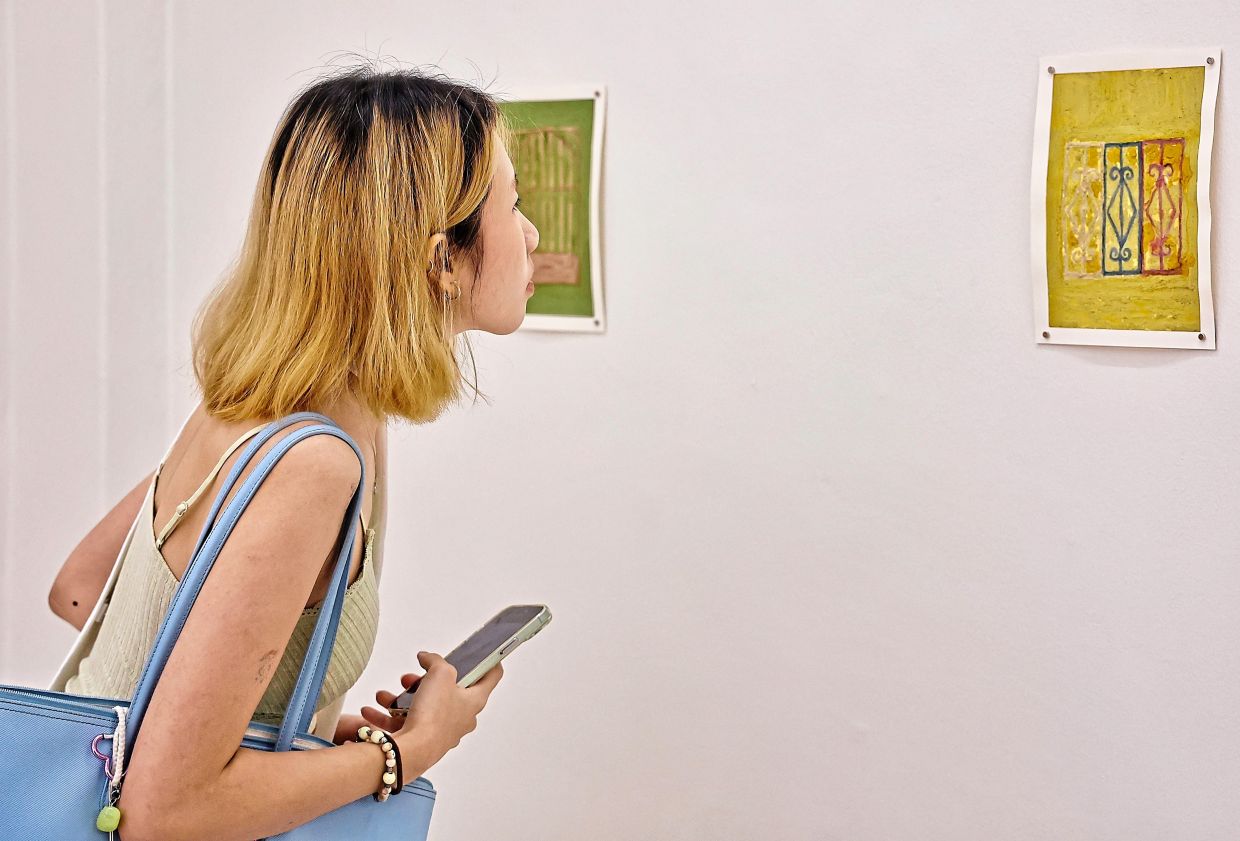When her grandmother’s home in Kuantan was broken into at the end of last year, 25-year-old artist Nurul Ain Nor Halim, who goes by Ain, was as dismayed as the rest of her family.
But there was a part of her that was transfixed – the image of the burglar’s clean and tidy cut through the metal grille covering a window in the kitchen, where they had gained entry into the home, remained stuck in her mind and imagination.
“Luckily there wasn’t much to steal from the house, as it had been left empty for quite some time,” says Ain in a recent interview at The Back Room gallery in Kuala Lumpur.
“But what stood out to me was how neatly they had cut a hole in the grille – like it had been done with scissors. My first thought when I saw the photo in the family group chat was, ‘Wow, are they an artist or something?’” she adds with a laugh.
The break-in acted as the catalyst that motivated Ain to put together her second solo exhibition, Atas Pagar, currently showing at The Back Room gallery until July 20.
Visitors can see the cut-through window grille, along with another that was removed from her family home to make way for a newer fire-access design.
“I wanted to display them across from one another as a contrast – one grille was cut through in secret and without permission, while the other was voluntarily taken down and left to quietly rust and disintegrate,” she explains.
Locked in or out?
Atas Pagar comes hot off the heels of her first solo, Da Lama Dah, which took place at Blank Canvas in George Town, Penang from March 1 to May 25 this year. While her previous show looked at the tradition of oral storytelling, this new solo highlights a common feature of Malaysian homes – window and door grilles, gates and fences.
“Growing up, my family moved around a lot, so I spent most of my childhood outside of Malaysia, in Japan and Indonesia. Then I moved to the Netherlands to further my studies.
“So when I returned to Malaysia a couple of years ago, I started to notice the prevalence of these gates, which you don’t typically see in the other countries I’ve lived in. I became obsessed with them,” says the Bangkok-born artist, who graduated from the Royal Academy of Arts in The Hague, Netherlands.
For Ain, who now works as an art teacher, the idea of a “gate” can change depending on the context. “I wanted to explore the role of gates in its many forms, from physical to cultural to philosophical. What we choose to enclose, and leave open, says something about safety, culture, trust, fear and identity.
“There’s also the concept of ‘gatekeeping’, especially by institutions such as museums and schools in terms of the narratives they choose to display or who gets access to education. We often don’t realise it, but in our daily lives, we’ve all encountered some form of gatekeeping,” she says.
Nothing left to waste
According to Ain, who dabbles in multiple mediums, Atas Pagar is a continuation of her ash painting series, which were the result of her experiments in mixing the ash left over from firing ceramic pieces.
“I wanted to try my hand at making my own clay, so I dug some up from the backyard of my family home in Putrajaya. After firing the pieces, I noticed there was a lot of ash left behind. I didn’t want it to go to waste, so one day, I combined the ash with pigment powder and a bit of clay and put it on some paper.
“What I noticed was that it became this new medium that isn’t quite painting, but also not necessarily sculpture – it occupies the space that’s somewhere in between,” she says.
That “in-between” quality of the works is one of the reasons why Ain decided to name the show Atas Pagar. Another reason is her affinity with the phrase and how it reflects her own personality.
“As an artist, when I create something, I often overthink and question myself, like ‘Does this make sense?’ or ‘Is this good enough?’ I don’t see that as a bad thing. It’s a way to dig deeper and look at things from different perspectives. But that’s one of the reasons why I’m drawn to the phrase ‘atas pagar’ and why I felt it was the perfect title for this show,” she adds.
Despite harbouring some self-doubt about her works, once the art is out there, Ain doesn’t mind if you love it or hate it.
“I’d rather have a reaction than no reaction. Because no reaction means that there’s no discourse, there’s no talk, and I want to allow audiences to talk,” she concludes.
Atas Pagar is showing at The Back Room in Kuala Lumpur until July 20. Free admission. More info: thebackroomkl.com.









